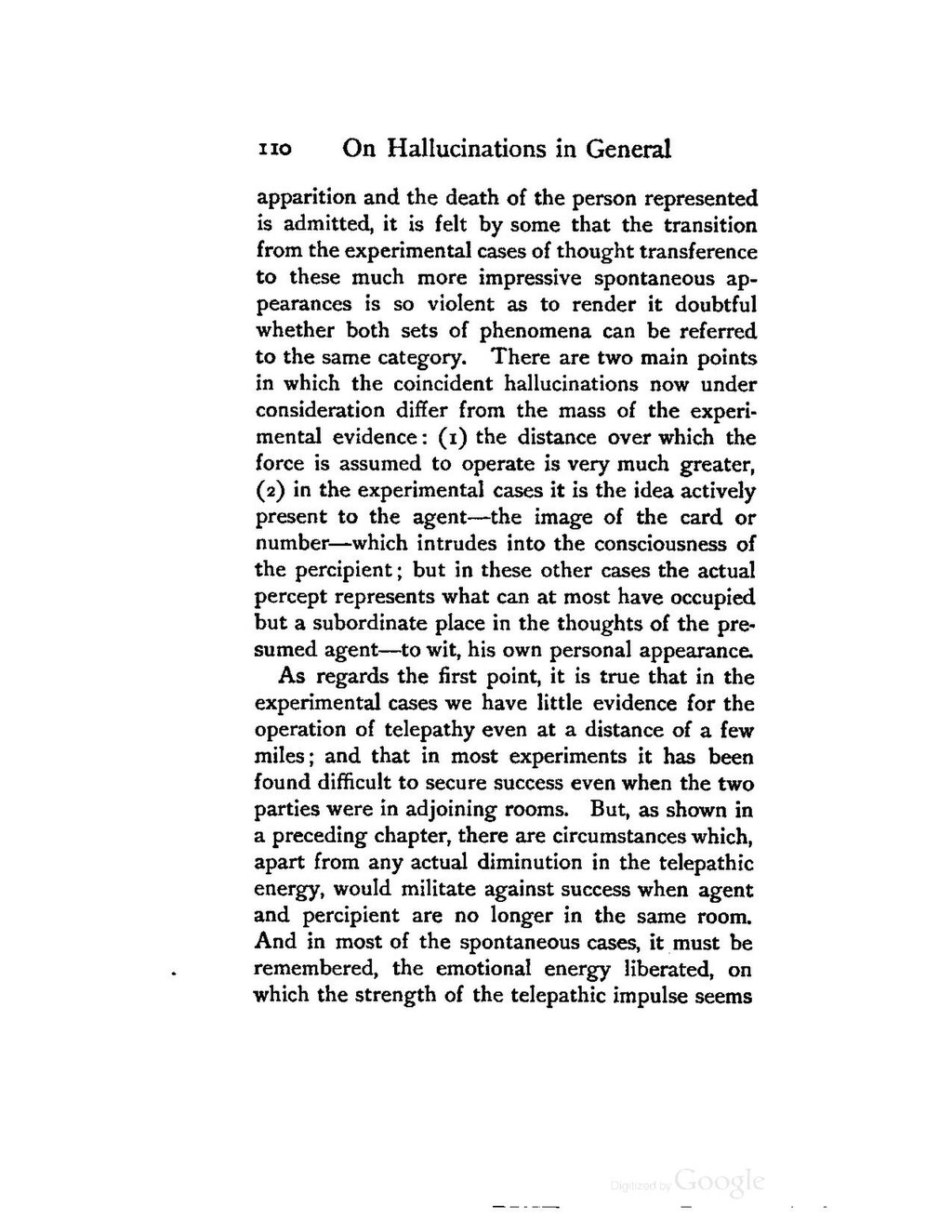apparition and the death of the person represented is admitted, it is felt by some that the transition from the experimental cases of thought transference to these much more impressive spontaneous appearances is so violent as to render it doubtful whether both sets of phenomena can be referred to the same category. There are two main points in which the coincident hallucinations now under consideration differ from the mass of the experimental evidence: (1) the distance over which the force is assumed to operate is very much greater, (2) in the experimental cases it is the idea actively present to the agent—the image of the card or number—which intrudes into the consciousness of the percipient; but in these other cases the actual percept represents what can at most have occupied but a subordinate place in the thoughts of the presumed agent—to wit, his own personal appearance.
As regards the first point, it is true that in the experimental cases we have little evidence for the operation of telepathy even at a distance of a few miles; and that in most experiments it has been found difficult to secure success even when the two parties were in adjoining rooms. But, as shown in a preceding chapter, there are circumstances which, apart from any actual diminution in the telepathic energy, would militate against success when agent and percipient are no longer in the same room. And in most of the spontaneous cases, it must be remembered, the emotional energy liberated, on which the strength of the telepathic impulse seems
